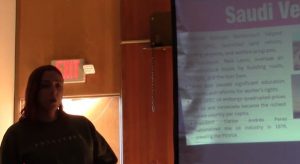Housing regulations usually worth the cost, but ‘nothing in my bank, yo’
8 min read
from DJ Suss D
My father loaned money to contractors to build tracts of houses for a savings and loan. He told me one day that a contractor couldn’t get a loan—because they kept making the streets bigger for fire trucks, taking up space for several houses. With fewer houses to sell at the current market rate, the contractor couldn’t make a profit and make the payments on the construction loan.
In Eugene in the ‘90s, I tried to live in a lean-to on my own property while I built a bioshelter. Lane County Planning said that, ‘This is America. We don’t do homesteading here.’ I told them that, ‘This is America. The whole country was homesteaded.’ They calmed down and said that the county didn’t want a mess that the taxpayer would be left to clean up. They don’t want shantytowns and cholera like in the Third World.
In 29 Palms, California I had plans from architect Nader Kahlili for a biodome. This was at the bottom of the 2008 financial crisis. Things were so bad the planning department was waiving fees for new construction within the city limits. There was a kind of Catch-22: They couldn’t collect fees anyway if there was no building going on. When you got nothin’ you got nothin’ to lose.
My property was on the outskirts of town so they wouldn’t waive my fees. I had to wonder: Would they waive the fees if I was building an apartment complex at the edge of the city? They want the tax revenue from large projects.
There’s a book called “Owner-Builder and the Code.” According to its authors, you can build a structurally sound house with 1x4s. The lumber association came up with 2×4 construction to sell more wood. The manufacturers sit on the committees that write the building codes to sell more products. The other members of the committee are insurance companies and public officials.
A graywater system just needs to keep the aerobic bacteria underground. The plumbing manufacturers’ association came up with a Rube Goldberg contraption costing thousands of dollars. Don’t even look at what they require for rainwater. If insurance companies had their way, fire alarm systems would require a building to be under water to avoid paying a claim after a fire.
California has made it mandatory to include sprinklers in new residential construction, raising the cost of housing tens of thousands of dollars. Sprinklers are for asset protection not life safety. You have to get out of the building when there is a fire. You can’t count on the sprinkler system to save you.
I worked briefly as a designer for a fire-alarm installer. A Fire Marshal once told me that during a fire, there was an alarm right above a person’s desk, but they were still sitting there. He asked them: ‘Didn’t you hear the alarm?’
The alarm company I worked for had the account of a major auto manufacturer at the Port of Los Angeles. Even though there were cars as far as the eye could see, they didn’t want to pay $30 grand to upgrade a fire-alarm system at their fuel depot. The company I worked for billed $30 an hour but only paid their labor half that.
Around this time, I went to a contractors association meeting to get some support about 29 Palms fees. A pool contractor told me he couldn’t compete with other installers because other companies were using cheap labor to keep costs down. My cousins own a window installation company. They refuse to use low-wage labor and lose many bids because of it.
Using skilled labor creates an upward spiral of wealth within a community. In Detroit as a result of the Great Recession, they tore down all the brick houses and replaced them with stucco. Locals told me masonry houses required artisan labor that would have created high-paying jobs, enabling people to afford a house and inject money into the local economy. It’s not sustainable to tear down houses because of the energy it takes and the waste it creates.
Developers used to believe in what I call the Disneyland method. They would put all the housing in one area and put business and industry in others, all connected with an Autopia. Satellite cities don’t work. They require sophisticated transport systems. There’s a reason in the old days people lived above their small business. New York developer Robert Moses was famous for getting around zoning codes to create parkways. Now people of color have freeways running through their front yards. Properties next to Central Park are some of the most valuable in the world because of their proximity to green space.
California is one of the most desirable places in the world to live, with the fifth largest economy in the world. It sets the standard of regulations for the country.
In Thousand Oaks, California, lack of zoning almost caused an environmental disaster. Developers didn’t create low-cost housing in Thousand Oaks. The help had to commute from the other side of the San Fernando Valley to get to work because they couldn’t afford to live in the area. With no mass transportation, they couldn’t make a living. I recently visited my cousin at her retirement home in Thousand Oaks. She was pissed because she couldn’t get anyone to take our lunch order from lack of help.
Why does anyone have an income lower than a ratio of 7:1 from the poorest to the richest in any neighborhood, anyway? Low-income housing should be spread throughout the community. Putting it all in one area of town creates a ghetto. No one wants a house next to a ghetto, so that ghetto just expands, lowering quality of living for everyone. An MBA student once told me you can’t reduce the world’s problems to the distribution of wealth.
Actually, NIMBY should stand for, “Nothing In My Bank, Yo”.
One solution would be to compensate contractors as well as businesses for their loss from the cost of redesigning a project to accommodate new regulations. However, if wages were anywhere near where they should be, they might still be able to get loans and ultimately make a profit without a government subsidy to make up for increased prices due to regulations. If people are paid enough to buy a house, there’s not much you can do to stop contractors from building. If the funds are there, they will build it regardless of regulations.
The banks don’t want to make these loans. They don’t want to take any risk at all and charge high fees and interest rates adding to the cost of housing.
They facilitate a downward spiral of wages by loaning to corporations that don’t pay a living wage because they know they will be bailed out by the taxpayer. People need to be paid enough to buy a safe and comfortable house. Wages have not gone up compared to the cost of living for over 30 years. The banks are well aware of this fact.
I was looking at short sales at the bottom of the 2008 financial crisis. The banks were sitting on these houses until they had several buyers bidding against each other while the house sat in disrepair creating blight instead of selling it cheap to someone who would fix it up.
I went to a nonprofit called the Association of Community Organizations for Reform Now (ACORN) to help me get financing. They made me do a monthly household budget. My payments had to be one-fourth of my monthly bills. Yet, ACORN was blamed for the banks making bad loans.
I got a rehab loan. When I did the repairs, I had a hard time getting the bank to look at what I’d done. They don’t care, as long as you make the payments.
It wasn’t too long ago they’d hang an architect if the house he designed fell down. In Third World countries, people are often buried alive under unreinforced masonry construction. In a way, regulations save builders’ careers. They can’t be sued if they follow them.
Tolstoy said that if everyone followed the golden rule, we wouldn’t need any rules. Of course, regulations should constantly be reviewed. But contractors ultimately make more money from them. They bitch and moan but at the end of the day they are for them because they create more work for them to bill.
Housing costs would not be such a burden if tax dollars were used for things that brought household costs down like healthcare, education, and infrastructure. Instead, we have a trillion-dollar war budget that is of no use to anyone but weapons manufacturers. Jobs are thrown up as an excuse to drop bombs and destroy tanks, effectively looting the Treasury.
Anti-regulation is mostly supply-side rhetoric. The corporate oligarchs have applied Third World austerity to the First World. It’s the same claptrap hullabaloo balderdash they tell environmentalists: If you want a clean environment, you’re going to put coal workers on the street. If you want jobs, we need tax breaks for big box stores. We can’t build houses because of too many regulations and zoning restrictions. Homeless blackmail. First thing they’ll do is cut energy requirements, then start cutting trees.
For the most part, health, safety, energy, and green space regulations improve quality of life and are well worth any increased cost. It’s called laissez-faire capitalism, not sans regulacion capitalism. Regulations are an indication and a result of progress. When science finds a problem with technology, we have to retool. That’s when the government steps in with incentives to maintain commerce. Keynes yes, Friedman no.
Home construction methods have improved over the years. Construction costs have gone up mostly because the quality has gone up with improved methods. We went from whale oil to petroleum to light our houses. Just like with fossil fuels, we can’t use old housing technology anymore. This retooling depends on funding at the bottom of the market for a more balanced cyclical economy.
In 2021 Rep. Maxine Waters sponsored House Bill 4496 before Congress, called the ‘Ending Homelessness Act.’ The bill would create a constitutional amendment that would make housing vouchers an entitlement like food stamps. The bill’s supporters claim if passed, it would effectively end widespread homelessness and housing instability.
DJ Suss D is a LEED certified designer. He has experimented with sustainability for over 30 years. He can be heard on KEPW 97.3 LPFM on ‘Talk is Cheap’ Saturdays at 4 p.m. He’s known as the Robespierre of regulation reform.






